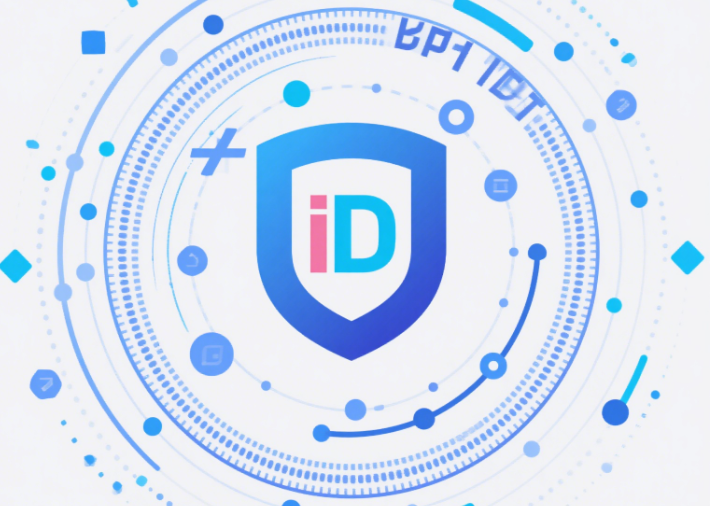In an era where data breaches and identity theft dominate headlines, decentralized identity (DID) emerges as a transformative solution. Unlike traditional systems where third parties control personal information, DID empowers users to own and manage their digital identities securely and privately. This article explores how DID is reshaping industries, its technical foundations, and its potential to redefine trust in the digital realm.
Understanding Decentralized Identity
Decentralized identity represents a paradigm shift from centralized systems like Google or Facebook logins, where users rely on intermediaries to verify their identities. DID leverages blockchain and distributed ledger technology (DLT) to create self-sovereign identities that users control entirely. Key components include:
- Decentralized Identifiers (DIDs): Unique, cryptographically secure identifiers stored on a blockchain, eliminating reliance on central authorities.
- Verifiable Credentials (VCs): Digital proofs of identity attributes (e.g., education, professional certifications) that users can share selectively without exposing sensitive data.
- Blockchain Security: Immutable records ensure data integrity, while zero-knowledge proofs enable privacy-preserving authentication.
For instance, Microsoft’s ION network, built on the Bitcoin blockchain, allows users to create DIDs with high scalability, supporting thousands of transactions per second. Similarly, projects like uPort enable users to manage identities across multiple platforms securely.
How Decentralized Identity Works
- Identity Creation: Users generate a DID and cryptographic key pair, storing them in a digital wallet (e.g., MetaMask).
- Credential Issuance: Trusted entities (e.g., governments, universities, corporations) issue VCs linked to the DID, which users can revoke or update at will.
- Verification: When accessing services, users present VCs, which are validated cryptographically—allowing providers to confirm authenticity without accessing unnecessary data.
A practical example is China’s “Henan Chain,” which uses blockchain to streamline government services. By storing identity data on a decentralized network, citizens can securely share credentials for services like real estate registration, reducing paperwork and fraudulent activities.
Advantages of Decentralized Identity
Enhanced Security
Traditional centralized systems are vulnerable to breaches, as seen in the 2023 Equifax hack that exposed 147 million records. DID eliminates single points of failure by distributing data across a network of nodes. For example, Inspur Cloud’s 2025 patent utilizes smart contracts to validate credentials, ensuring only authorized parties can access user data.
Privacy Protection
DID allows users to share only the specific information required for a transaction. In healthcare, patients can grant hospitals access to targeted medical records without disclosing irrelevant personal details, aligning with global regulations like GDPR and HIPAA.
Global Accessibility
Over 1.7 billion people worldwide lack official identification, limiting their access to financial services and basic rights. DID platforms like World ID leverage biometric authentication (e.g., iris scans) to provide verifiable identities, empowering the unbanked to participate in decentralized finance (DeFi) and global economies.
Interoperability
Standards like the W3C’s DID Core Specification ensure compatibility across different platforms and blockchains. For instance, a university degree credential issued on the Ethereum blockchain can be seamlessly verified on Polkadot, fostering cross-chain collaboration and universal identity recognition.

Challenges and Solutions
Technical Complexity
Implementing DID requires expertise in blockchain, cryptography, and standards like DIDComm. Organizations such as the Decentralized Identity Foundation (DIF) are addressing this by developing open-source tools and frameworks to simplify integration for developers and enterprises.
Regulatory Hurdles
Cross-border identity verification faces challenges from conflicting data protection laws. Initiatives like the ITU-T H.DLT-AGFAS standard aim to harmonize regulatory frameworks, enabling secure and compliant identity sharing across international borders.
User Adoption
Many users remain unfamiliar with crypto wallets and private key management, creating a barrier to adoption. User-friendly interfaces from wallet providers (e.g., Coinbase Wallet) and educational campaigns are crucial to demystify DID and encourage mainstream use.
Scalability
Public blockchains like Bitcoin and Ethereum have historically struggled with high transaction fees and slow processing speeds. Layer 2 solutions (e.g., the Lightning Network for Bitcoin, Optimism for Ethereum) and consensus mechanism upgrades (e.g., Proof of Stake) are rapidly improving scalability and making DID systems more efficient.
Real-World Applications
Finance and DeFi
Decentralized finance platforms like Aave use DID to assess users’ creditworthiness without requiring traditional KYC (Know Your Customer) data. In 2025, the CFTC’s approval of Cardano’s ADA futures marked a milestone in institutional acceptance of blockchain-based identity solutions.
Government and Public Services
The EU’s Digital Identity Wallet, set to launch in 2025, will enable citizens to securely store IDs, driving licenses, and vaccination records on a decentralized network, streamlining public service access while enhancing data privacy.
Healthcare and Life Sciences
IBM’s blockchain-based systems allow patients to share medical records with researchers or clinicians while maintaining control over their data, accelerating medical research and personalized care without compromising privacy.
Supply Chain and Logistics
Companies like Walmart utilize DID to track product provenance, ensuring transparency and reducing fraud. For example, a head of lettuce can be traced from farm to supermarket shelf using a DID-linked QR code, enhancing food safety and consumer trust.
The Future of Decentralized Identity
Gartner predicts that by 2025, 40% of organizations will adopt DID solutions, driven by stricter privacy regulations, the growth of Web3, and the need for secure digital interactions. Innovations like Sui’s zkLogin, which combines zero-knowledge proofs with passwordless authentication, are pushing the boundaries of security and usability.
As DID matures, it will become the foundational infrastructure for a trustless digital economy, enabling seamless, secure transactions across industries and geographical boundaries.
Conclusion: Bitora’s Role in Shaping the DID Ecosystem
At Bitora, we are dedicated to empowering users and enterprises to navigate the decentralized identity landscape. Our platform delivers real-time insights into technological advancements, regulatory updates, and market trends, helping stakeholders make informed decisions in this transformative space. Whether you’re a developer building the next-generation DID solution or an investor exploring Web3 opportunities, Bitora serves as your trusted partner for decentralized finance and beyond.
Stay informed with Bitora: Your ultimate resource for decentralized identity news, analysis, and innovation.








Leave A Reply